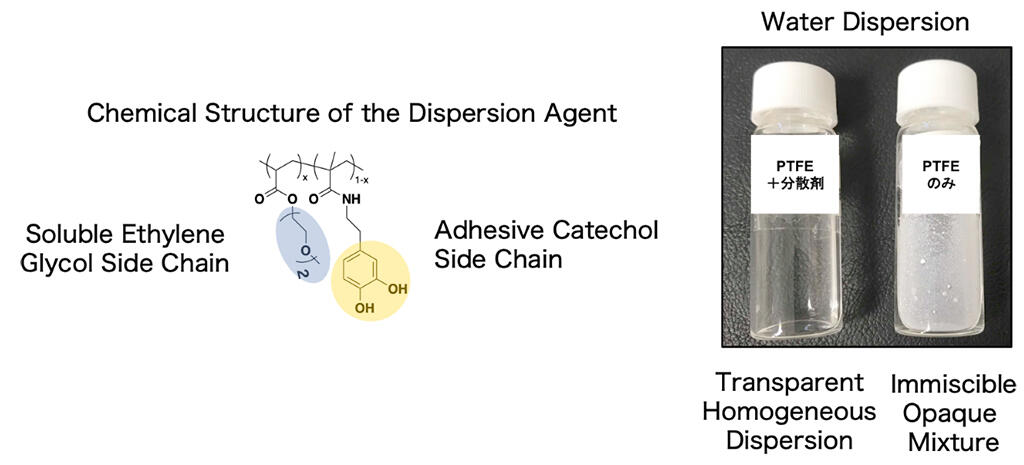Fluorine-based surfactants bioaccumulate and are environmentally persistent, and in response to current environmental issues, regulations are being tightened in Europe and other parts of the world. This has resulted in a need in the industrial sector for fluorine-based dispersion agents to be replaced by non-fluorine-based surfactants. Inspired by the adhesion of mussels, Associate Professor Hiroshi Yabu (Junior PI) of the Advanced Institute for Materials Research, Tohoku University, succeeded in developing an alternative dispersion agent that does not contain fluorine. When hydrophobic particles are dispersed in water using this dispersion agent, fluorine does not wash out into the waste liquid. As a result, industrial processes with small ecological and environmental loads can be realized. This achievement was published in RSC Advances.
Sekisui Plastics Co., Ltd., which aims to put non-fluorine-based dispersion agents to practical use, has started providing samples and will proceed with the construction of a production system for industrialization in the future. Fluorine-based resins such as polytetrafluoroethylene (PTFE) are widely used in industrial applications as binding materials and lubricants. During the manufacturing of these, it is necessary to prepare a dispersion in which fluorine-based resins are dispersed in a solvent. To disperse particles with a low surface free energy, such as in this dispersion it is necessary to coat the particle surface with a dispersant having an affinity for the solvent.
The research group was inspired by the fact that the adhesive proteins of mussels contain catechol groups. They then used this inspiration to, develop various catechol-containing adhesive copolymers. They also discovered that low-surface-energy particles, which are otherwise difficult to disperse in water, could be dispersed in water by coating the particle surface with a catechol-containing copolymer obtained from the copolymerization of a monomer with ethylene glycol, which has a high affinity for water.
In this study, a tetrahydrofuran (THF) solution of the synthesized dispersant was prepared and stirred with PTFE particles for a few minutes to obtain coated PTFE particles. These coated PTFE particles were collected by centrifugation and sonicated in water to ensure their dispersion in water. It was also confirmed that an aqueous dispersion could be obtained not only for PTFE particles but also for other particles such as zinc oxide nanoparticles. Since this copolymer does not contain fluorine, it is expected to be applicable as an alternative dispersant for fluorine-based surfactants. It was further confirmed that the PTFE particles coated with this copolymer could serve as a nanoreactor for producing silver nanoparticles, with potential applications as metal nanoparticles.

Tohoku University press release (Japanese): http://www.tohoku.ac.jp/japanese/2021/09/press20210930-02-PTFE.html
This article has been translated by JST with permission from The Science News Ltd.(https://sci-news.co.jp/). Unauthorized reproduction of the article and photographs is prohibited.




